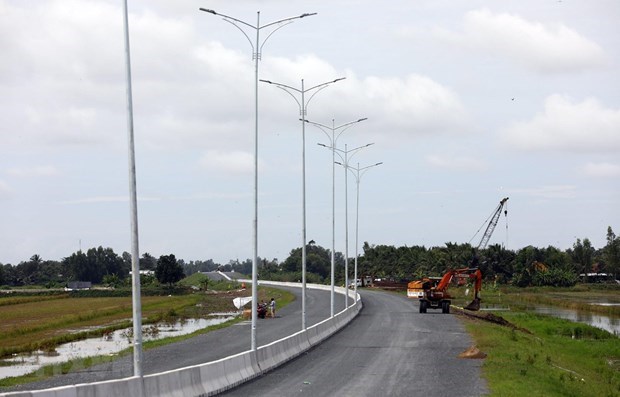 |
|
Once open to traffic, the Hai Van Tunnel 2 will contribute to ensure traffic safety between Thua Thien-Hue province and Da Nang city (Photo: VietnamPlus) |
The projects are the upgrade of runways of Noi Bai International Airport in Hanoi and Tan Son Nhat International Airport in HCM City; the Hai Van 2 road tunnel belonging to the Deo Ca tunnel project; and Lo Te-Rach Soi Highway.
On January 10, Tan Son Nhat International Airport’s runway 25R will be put into use again on after six months of closure for upgrading, along with the inauguration of runway 1B in Noi Bai International Airport.
The runway 25R upgrading project, started on June 29 last year, has a total investment of more than 2 trillion VND (86 million USD). The upgrade is carried out in two phases, with the first lasting six months.
In the second phase, the project will upgrade five existing taxiways and build new rapid exit taxiways, connecting taxiways and parallel taxiways besides a drainage system, taxiway lights and aviation signboards.
Tan Son Nhat, Vietnam’s largest airport, has been overloaded for many years and the resultant damage has been evident in visible cracks and deformation and subsidence of the asphalt surfaces.
Earlier on January 1, runway 1B of Noi Bai International Airport in Hanoi was also put into operation after upgrading.
The two-phase project to repair the Noi Bai runway kicked start on June 29 with an estimated cost of about 2.03 trillion VND (over 88 million USD). The second phase is scheduled to be completed by December 31, 2021.
Meanwhile, on January 11, the Hai Van Tunnel 2 – the longest road tunnel in Southeast Asia, connecting the central province of Thua Thien-Hue and Da Nang city will be inaugurated.
The project of expanding Hai Van Road Tunnel was approved by the Ministry of Transport in 2016. The first stage is to repair and upgrade the existing Hai Van Road Tunnel 1 and improve a section of National Highway No 1 running through the Hai Van Pass.
The second stage is to broaden a tunnel, which was used for the excavation, into a traffic tunnel – Hai Van Road Tunnel 2 – with four lanes and an approaching road to the tunnel of the same scale. The entire route is set to be put into operation by the end of 2020.
The Hai Van Road Tunnel 2, which is 6.2 km in length, built through a mountain, is designed with two sections for vehicles; each section is 9.7 metres in width. The north approaching road to the tunnel is about 1.7 km long and the southern approaching road is 4 km.
Construction of the project concluded in September 2020, three months earlier compared to the plan. It expected to help in reducing traffic pressure for the current Hai Van Road Tunnel 1. It will also shorten travelling time for vehicles and improve the efficiency of transporting goods and passengers.
On January 12, a ceremony will be held in Chau Thanh district of the Mekong Delta province of Kien Giang to open the Lo Te-Rach Soi highway to traffic.
 |
|
Lo Te – Rach Soi Highway running from Can Tho to Kien Giang. (Photo: VNA) |
The Lo Te – Rach Soi Expressway runs southwest from the Lo Te T-junction in Thot Not district, Can Tho city to Rach Soi commune in Rach Gia township, Kien Giang province.
The 51km expressway with four lanes will connect with the Vam Cong Bridge, a major link in the Mekong Delta region, and will be a part of the western part of the North-South Expressway that will run from Binh Phuoc province via HCM City to Ca Mau province.
Construction of the over 6.3 trillion VND (270.5 million USD) Can Tho expressway started in 2016, with the majority coming as loan from the Republic of Korea.
It is expected to shorten travel time from Can Tho to Kien Giang to 50 minutes from 1 hour and 30 minutes./.VNA